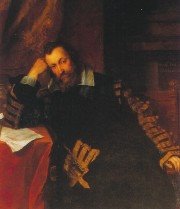
* * *
Religious divide
Mary returned to Scotland soon after her husband's death and arrived in Leith on August 19, 1561. Despite her talents, Mary's upbringing had not given her the judgment to cope with the dangerous and complex political situation in the Scotland of the time.
Mary, being a devout Roman Catholic, was regarded with suspicion by many of her subjects as well as by Elizabeth, who was her father's cousin and the monarch of the neighbouring Protestant country. Scotland was torn between Catholic and Protestant factions, and Mary's illegitimate half-brother, James Stewart, 1st Earl of Moray, was a leader of the Protestant faction. The Protestant reformer John Knox also preached against Mary, condemning her for hearing Mass, dancing, dressing too elaborately, and many other things, real and imagined
To the disappointment of the Catholic party, however, Mary did not hasten to take up the Catholic cause. She tolerated the newly-established Protestant ascendancy, and kept James Stewart as her chief advisor. In this, she may have had to acknowledge her lack of effective military power in the face of the Protestant Lords. She joined with James in the destruction of Scotland's leading Catholic magnate, Lord Huntly, in 1562.
Mary was also having second thoughts about the wisdom of having crossed Elizabeth, and she attempted to make up the breach by inviting Elizabeth to visit Scotland. Elizabeth refused, and the bad blood remained between them. Mary then sent William Maitland of Lethington as an ambassador to the English court to put the case for Mary as a potential heir to the throne. Elizabeth's response is said to have included the words "As for the title of my crown, for my time I think she will not attain it." However, Mary, in her own letter to her maternal uncle Francis, Duke of Guise, reports other things that Maitland told her, including Elizabeth's supposed statement that, "I for my part know none better, nor that my self would prefer to her." Elizabeth was mindful of the role Parliament would have to play in the matter.
In December 1561 arrangements were made for the two queens to meet, this time in England. The meeting had been fixed for York "or another town" in August or September 1562, but Elizabeth sent Sir Henry Sidney to cancel in July because of the Civil War in France. In 1563, Elizabeth made another attempt to neutralise Mary by suggesting she marry Robert Dudley, 1st Earl of Leicester (Henry Sidney's brother-in-law), whom Elizabeth trusted and thought she could control. Dudley, being a Protestant, would have solved a double problem for Elizabeth. She sent an ambassador to tell Mary that, if she would marry someone (as yet unnamed) of Elizabeth's choosing, Elizabeth would "proceed to the inquisition of her right and title to be our next cousin and heir". This proposal was rejected.
http://en.wikipedia.org/wiki/Mary_queen_of_scots
* * *

No comments:
Post a Comment